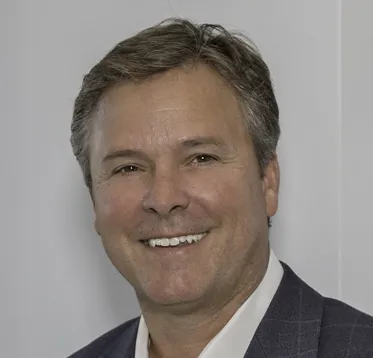For the second straight year, Jacksonville, Florida-based Summit Contracting Group is the top apartment builder in the country, according to the National Multifamily Housing Council.
Despite having its best revenue year ever and completing 7,771 units in 2023, Summit, like many other multifamily firms, saw starts and new business fall compared to a very busy 2022 and 2021.
“The whole industry was readjusting in 2023,” Marc Padgett, Summit’s president, told Multifamily Dive. “In 2023, we signed fewer jobs than in 2021 and 2022 because interest rates were up and insurance rates were up. Everything slowed down due to that. So we’ll see a ripple effect from that into 2024 and 2025.”
However, if the early months provide any hint, 2024 looks better. “We’ve actually signed more work at this time this year than we did [through the same time period] in 2023,” Padgett said.
Padgett attributed part of the gain in business to what he calls the company’s prototype apartment program that leverages volume discounts that can shave 7% off the cost of development. But part of the gain also lies in changing expectations.
“Everybody has had to swallow the adjustment [in development prices], get used to it and get comfortable with it and realize that it’s not going to change,” Padgett said. “If it does change, it isn’t going to be soon.”
Here, Padgett talks with Multifamily Dive about the lending environment, labor prices and material backlogs.
This interview has been edited for brevity and clarity.
MULTIFAMILY DIVE: When do you think construction financing will pick up?
MARC PADGETT: The banks have a herd mentality. I don’t know which one goes first, but one of them will crack the door open, and then they all follow through. It will go the other way when one of them starts lending money in the next year or so.
Have you seen costs to build go down?
We had a pretty good cost reduction. We do some custom work, but most of our work tends to be prototypes because they’re (similar-looking to the custom builds) Class-A buildings for less money. So we saw a reduction in those toward the end of last year and the beginning of this year. But I will tell you that we won’t see the significant reduction that everybody is waiting for.
Why is that?
Take the guy who was working on the factory floor and making $16 or $17 an hour pre-COVID, or the truck driver who was getting $1 a mile and all those other people like them. Now, that guy in the factory makes $27 an hour doing the same job, and the truck driver makes $3 a mile doing the same job.
You can’t unwind that. You’re not going back to those previous numbers, so our costs will stay higher.
How does your prototype program work?
We had to figure out a way to buy in volume. For instance, if I had 50 custom design projects, every one of those jobs would be different. They would have different tiles from one to the other, different appliances, different windows, different square footage — everything. So all the subs would have different waste factors. They’ve never built it before.

Marc Padgett
Permission granted by Summit Contracting Group
Our prototype is basically a custom-designed building that we took and repeated over and over, and we, as a contractor, dictate what the spec will be. So now, if I have 50 projects, I can go to Sherwin-Williams and buy 50 projects’ worth of paint. We bought over 400,000 gallons of paint from Sherwin-Williams last year.
We leverage that buying power into these prototypes. That’s where they’re most efficient. It’s being able to take our volume and make it consistent across the projects we’re building.
Are material costs getting better?
Sure, the raw material cost could come down a little. We see lumber fluctuate up and down. But pre-COVID, it was in the $300s, and now it’s in the $500s. We’ll never get back to the $300 level because of all the other associated costs.
For example, when lumber went back to the $500s, the truss package was still more than it was earlier when it was in the $500s. It is somewhere closer to COVID prices because of all of those other costs.
Food costs more, gas costs more, insurance costs more and minimum wages are higher. So, to pay for that inflation, people are all making more money. To pay those people more money, we have to pay more.
Have the supply chain issues improved?
I would say the supply issues are not as bad as they were. I wouldn’t say they’re gone. But they have gotten a lot better.
Are there specific products and materials that are still issues?
Everything still takes longer to get. Electrical switch gear has been hard to get. It sometimes takes a year to order that. But since the switch gears are the same on every single building in our prototype, we already have them in our yard, so it doesn’t matter to us.
On a custom deal, you don’t know what to order until you get the drawings. In our buildings, the drawings are already designed. So it’s kind of like buying a tract home, in a way. We know what we need to buy, and we can pre-stock it where we need to. We don’t always pre-stock everything because we’re able to get a lot of things. But if we can’t get something, we would order it early or pre-stock it.
Click here to sign up to receive multifamily and apartment news like this article in your inbox every weekday.
